
- •Study Skills Workshop
- •1.1 An Introduction to the Whole Numbers
- •1.2 Adding Whole Numbers
- •1.3 Subtracting Whole Numbers
- •1.4 Multiplying Whole Numbers
- •1.5 Dividing Whole Numbers
- •1.6 Problem Solving
- •1.7 Prime Factors and Exponents
- •1.8 The Least Common Multiple and the Greatest Common Factor
- •1.9 Order of Operations
- •THINK IT THROUGH Education Pays
- •2.1 An Introduction to the Integers
- •THINK IT THROUGH Credit Card Debt
- •2.2 Adding Integers
- •THINK IT THROUGH Cash Flow
- •2.3 Subtracting Integers
- •2.4 Multiplying Integers
- •2.5 Dividing Integers
- •2.6 Order of Operations and Estimation
- •Cumulative Review
- •3.1 An Introduction to Fractions
- •3.2 Multiplying Fractions
- •3.3 Dividing Fractions
- •3.4 Adding and Subtracting Fractions
- •THINK IT THROUGH Budgets
- •3.5 Multiplying and Dividing Mixed Numbers
- •3.6 Adding and Subtracting Mixed Numbers
- •THINK IT THROUGH
- •3.7 Order of Operations and Complex Fractions
- •Cumulative Review
- •4.1 An Introduction to Decimals
- •4.2 Adding and Subtracting Decimals
- •4.3 Multiplying Decimals
- •THINK IT THROUGH Overtime
- •4.4 Dividing Decimals
- •THINK IT THROUGH GPA
- •4.5 Fractions and Decimals
- •4.6 Square Roots
- •Cumulative Review
- •5.1 Ratios
- •5.2 Proportions
- •5.3 American Units of Measurement
- •5.4 Metric Units of Measurement
- •5.5 Converting between American and Metric Units
- •Cumulative Review
- •6.2 Solving Percent Problems Using Percent Equations and Proportions
- •6.3 Applications of Percent
- •6.4 Estimation with Percent
- •6.5 Interest
- •Cumulative Review
- •7.1 Reading Graphs and Tables
- •THINK IT THROUGH The Value of an Education
- •Cumulative Review
- •8.1 The Language of Algebra
- •8.2 Simplifying Algebraic Expressions
- •8.3 Solving Equations Using Properties of Equality
- •8.4 More about Solving Equations
- •8.5 Using Equations to Solve Application Problems
- •8.6 Multiplication Rules for Exponents
- •Cumulative Review
- •9.1 Basic Geometric Figures; Angles
- •9.2 Parallel and Perpendicular Lines
- •9.3 Triangles
- •9.4 The Pythagorean Theorem
- •9.5 Congruent Triangles and Similar Triangles
- •9.6 Quadrilaterals and Other Polygons
- •9.7 Perimeters and Areas of Polygons
- •THINK IT THROUGH Dorm Rooms
- •9.8 Circles
- •9.9 Volume
- •Cumulative Review
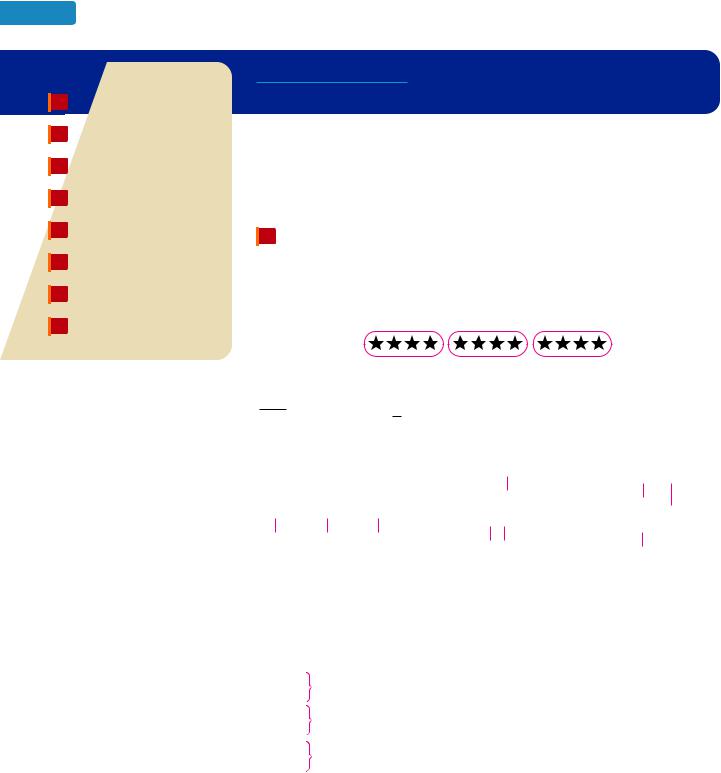
54 |
Chapter 1 Whole Numbers |
Objectives
1Write the related multiplication statement for a division.
2Use properties of division to divide whole numbers.
3Perform long division (no remainder).
4Perform long division (with a remainder).
5Use tests for divisibility.
6Divide whole numbers that end with zeros.
7Estimate quotients of whole numbers.
8Solve application problems by dividing whole numbers.
S E C T I O N 1.5
Dividing Whole Numbers
Division of whole numbers is used by everyone. For example, to find how many 6-ounce servings a chef can get from a 48-ounce roast, he divides 48 by 6. To split a $36,000 inheritance equally, a brother and sister divide the amount by 2. A professor divides the 35 students in her class into groups of 5 for discussion.
1 Write the related multiplication statement for a division.
To divide whole numbers, think of separating a quantity into equal-sized groups. For example, if we start with a set of 12 stars and divide them into groups of 4 stars, we will obtain 3 groups.
A set of 12 stars.
There are 3 groups of 4 stars.
We can write this division problem using a division symbol , a long division symbol, or a fraction bar . We call the number being divided the dividend and the number that we are dividing by is called the divisor. The answer is called the quotient.
Division symbol |
|
Long division symbol |
Fraction bar |
||||||||||||
|
|
|
|
|
|
|
|
|
|
Quotient |
Dividend |
Quotient |
|||
|
|
|
|
|
|
|
|
||||||||
|
|
|
|
|
|
|
|
|
|
|
|
|
|||
|
|
|
|
|
3 |
|
|
|
|
||||||
|
|
|
|
|
|
|
|
|
|
|
|
|
|
||
12 |
4 |
|
3 |
|
|
|
|
|
|
|
12 |
3 |
|||
|
|
|
|
|
|
||||||||||
|
|
|
|
|
|
|
|
|
|
|
|
||||
|
|
|
|
4 12 |
|
|
4 |
|
|
||||||
|
|
|
|
|
|
|
|
|
|
|
|
|
|||
Dividend |
Divisor |
Quotient |
Divisor |
|
Dividend |
|
|
|
|
||||||
|
Divisor |
||||||||||||||
|
|
|
|
|
|||||||||||
|
|
|
|
|
|
|
|
|
|
|
|||||
We read each form as “12 divided by 4 equals (or is) 3.”
Recall from Section 1.4 that multiplication is repeated addition. Likewise, division is repeated subtraction. To divide 12 by 4, we ask, “How many 4’s can be subtracted from 12?”
12
4
8
4
4
4
0
Since exactly three 4’s can be subtracted from 12 to get 0, we know that 12 4 3.
Another way to answer a division problem is to think in terms of multiplication. For example, the division 12 4 asks the question, “What must I multiply 4 by to get 12?” Since the answer is 3, we know that
12 4 3 because 3 4 12
We call 3 4 12 the related multiplication statement for the division 12 4 3. In general, to write the related multiplication statement for a division, we use:
Quotient divisor dividend
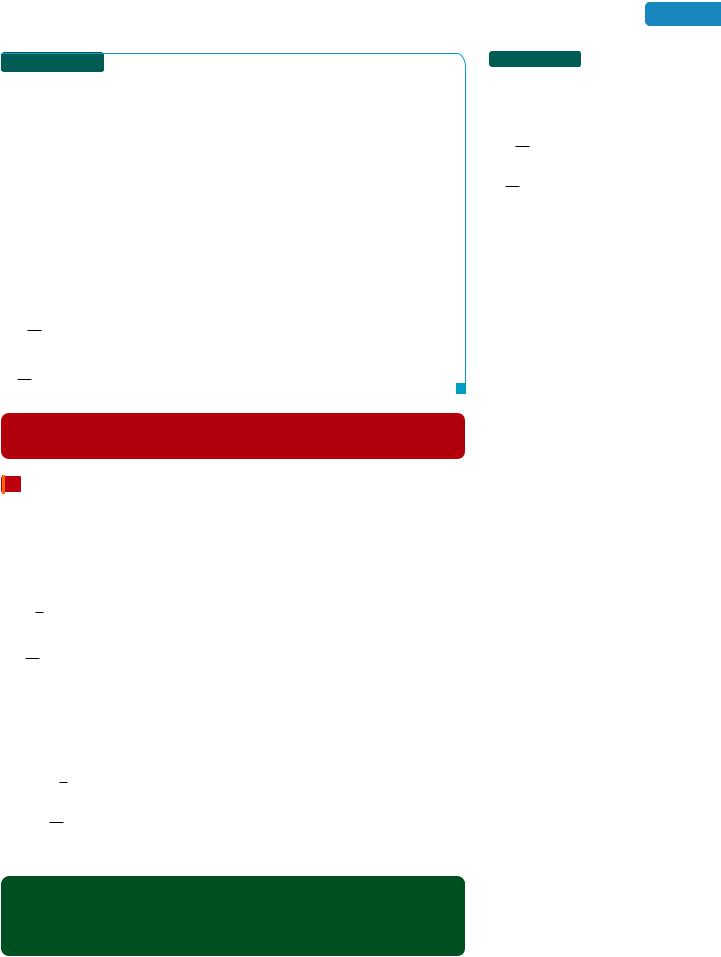
|
EXAMPLE 1 |
Write the related multiplication statement for each division. |
|||||
|
|
4 |
21 |
|
|||
|
|
|
|
|
|
||
a. 10 5 2 |
b. 6 24 |
c. |
|
7 |
|||
3 |
|||||||
Strategy We will identify the quotient, the divisor, and the dividend in each division statement.
WHY A related multiplication statement has the following form: Quotient divisor dividend.
Solution
|
|
|
|
|
Dividend |
|
|
|
|
|
|
|
||
|
|
|
|
|
|
|
|
|
|
|
|
|||
a. |
|
|
|
|
|
|
|
|
|
|
|
|
||
|
|
|
|
|
|
|
||||||||
10 5 2 |
because |
2 5 10. |
||||||||||||
|
|
|
|
|
Quotient |
|
|
|||||||
|
|
|
|
|
|
|
|
|
|
|
||||
|
|
|
|
|
|
|
|
|
|
|
||||
|
|
|
|
|
|
Divisor |
|
|
|
|
|
|
|
|
|
|
|
|
|
|
|
|
|
|
|
|
|
|
|
4
b. 6 24 because 4 6 24. 4 is the quotient, 6 is the divisor, and 24 is the dividend.
c. 213 7 because 7 3 21. 7 is the quotient, 3 is the divisor, and 21 is the dividend.
The Language of Mathematics To describe the special relationship between multiplication and division, we say that they are inverse operations.
2 Use properties of division to divide whole numbers.
Recall from Section 1.4 that the product of any whole number and 1 is that whole number. We can use that fact to establish two important properties of division. Consider the following examples where a whole number is divided by 1:
8 1 8 because 8 1 8.
4
1 4 because 4 1 4.
201 20 because 20 1 20.
These examples illustrate that any whole number divided by 1 is equal to the number itself.
Consider the following examples where a whole number is divided by itself:
6 6 1 because 1 6 6.
1
9 9 because 1 9 9.
35
35 1 because 1 35 35.
These examples illustrate that any nonzero whole number divided by itself is equal to 1.
Properties of Division
1.5 Dividing Whole Numbers |
55 |
 Self Check 1
Self Check 1
Write the related multiplication statement for each division.
a. 8 2 4
8
b.7 56
36
c.4 9
Now Try Problems 19 and 23
Any whole number divided by 1 is equal to that number. For example,
Any nonzero whole number divided by itself is equal to 1. For example, 1414 1.
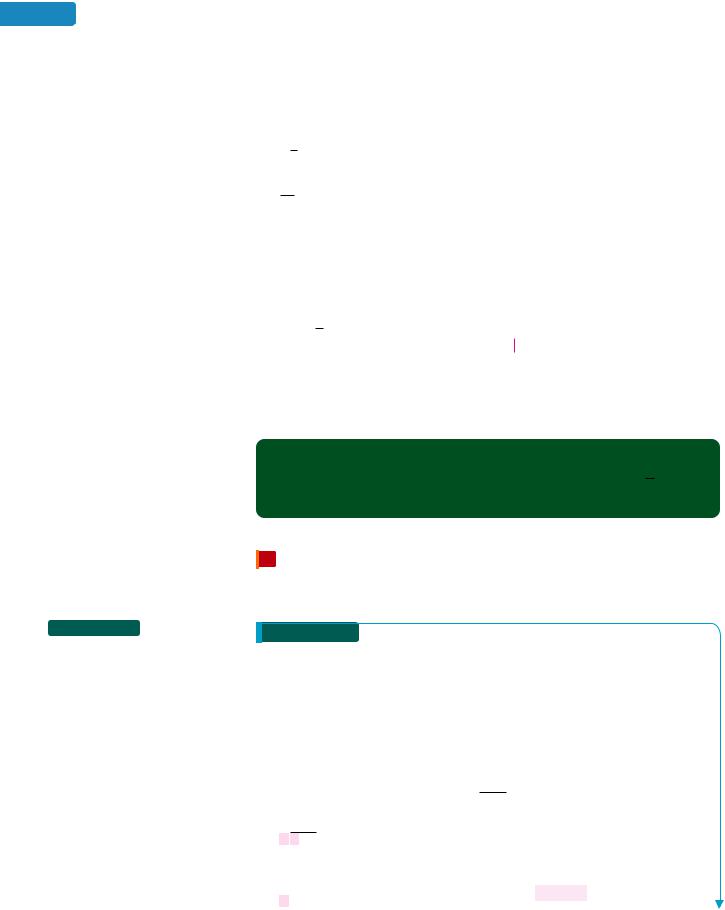
56 |
Chapter 1 Whole Numbers |
Recall from Section 1.4 that the product of any whole number and 0 is 0. We can use that fact to establish another property of division. Consider the following examples where 0 is divided by a whole number:
0 2 0 because 0 2 0.
0
7 0 because 0 7 0.
420 0 because 0 42 0.
These examples illustrate that 0 divided by any nonzero whole number is equal to 0.
We cannot divide a whole number by 0. To illustrate why, we will attempt to find the quotient when 2 is divided by 0 using the related multiplication statement shown below.
Division statement
20 ?
Related multiplication statement
? 0 2
There is no number that gives 2 when multiplied by 0.
Since 20 does not have a quotient, we say that division of 2 by 0 is undefined. Our observations about division of 0 and division by 0 are listed below.
Division with Zero
1.Zero divided by any nonzero number is equal to 0. For example, 170 0.
2.Division by 0 is undefined. For example, 170 is undefined.
 Self Check 2
Self Check 2
Divide using long division: 2,968 4. Check the result.
Now Try Problem 31
3 Perform long division (no remainder).
A process called long division can be used to divide larger whole numbers.
EXAMPLE 2 Divide using long division: 2,514 6. Check the result.
Strategy We will write the problem in long-division form and follow a four-step process: estimate, multiply, subtract, and bring down.
WHY The repeated subtraction process would take too long to perform and the related multiplication statement (? 6 = 2,514) is too difficult to solve.
Solution
To help you understand the process, each step of this division is explained separately. Your solution need only look like the last step.
We write the problem in the form 6 2514. The quotient will appear above the long division symbol. Since 6 will not divide 2,
6 2514
we divide 25 by 6.
4
|
|
|
Ask: “How many times will 6 divide 25?” We estimate that 25 6 is about 4, |
|
|
|
|
6 |
25 |
14 |
and write the 4 in the hundreds column above the long division symbol. |
|
|

1.5 Dividing Whole Numbers |
57 |
Next, we multiply 4 and 6, and subtract their product, 24, from 25, to get 1.
4
6 251424
1
Now we bring down the next digit in the dividend, the 1, and again estimate, multiply, and subtract.
41
|
|
|
|
|
|
|
|
|
|
|
6 2514 |
|
|
|
|
|
|
|
|||
24 |
|
|
|
|
|
|
|
|
||
|
|
|
|
|
|
|
|
|
||
|
|
11 |
|
|
|
|
|
|
|
|
|
|
|
Ask: “How many times will 6 divide 11?” We |
estimate |
that 11 6 is about 1, |
|||||
6 |
|
|||||||||
|
and write the 1 in the tens column above the long division symbol. |
Multiply |
1 |
|||||||
5 |
|
and 6, and |
subtract |
their product, 6, from 11, to get 5 . |
|
|
||||
To complete the process, we bring down the last digit in the dividend, the 4, and estimate , multiply , and subtract one final time.
419
6 2514
24 11
6
54
54 0
Ask: “How many times will 6 divide 54?” We
estimate that 54 6 is 9, and we write the
9 in the ones column above the long division symbol. Multiply 9 and 6, and subtract their product, 54, from 54, to get 0.
|
419 |
|
Your solution |
6 |
|
2514 |
||
should look |
24 |
|
like this: |
11 |
|
|
6 |
|
5454 0
To check the result, we see if the product of the quotient and the divisor equals the dividend.
1 5 |
|
Quotient |
|
|
|
|
419 |
|
|
|
|
||
|
|
|
|
|
|
|
|
|
|
|
|
|
|
6 |
|
Divisor |
6 2514 |
|||
2,514 |
|
Dividend |
|
|
|
|
|
|
|
|
|||
|
|
|
|
|||
The check confirms that 2,514 6 419.
The Language of Mathematics In Example 2, the long division process ended with a 0. In such cases, we say that the divisor divides the dividend exactly.
We can see how the long division process works if we write the names of the placevalue columns above the quotient. The solution for Example 2 is shown in more detail on the next page.
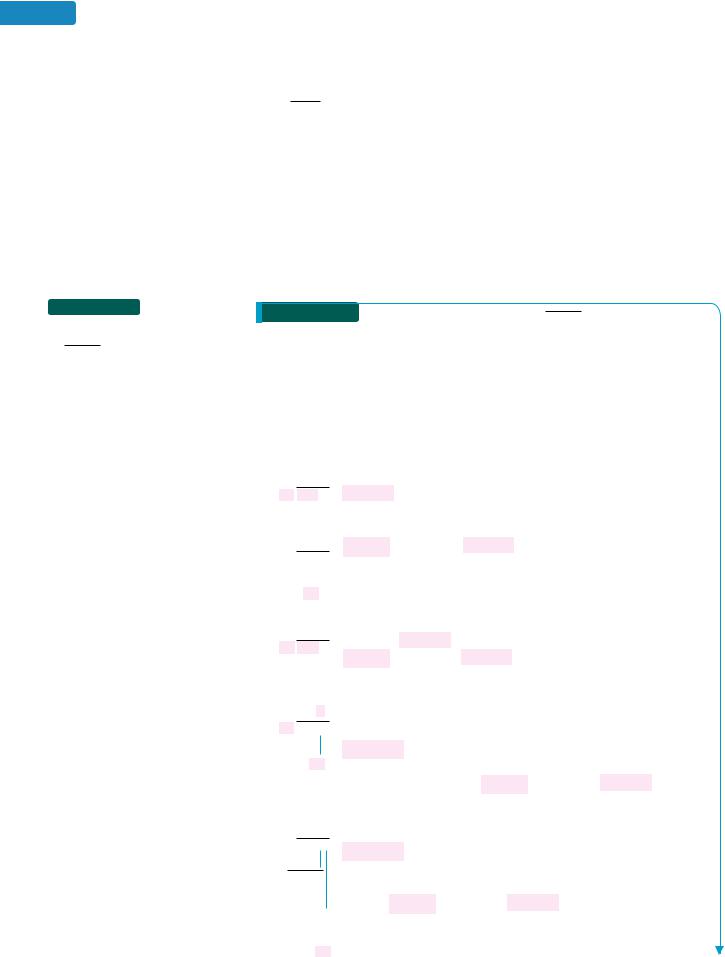
58 |
Chapter 1 Whole Numbers |
 Self Check 3
Self Check 3
Divide using long division:
57 45,885
Now Try Problem 35
HundredsTensOnes
419
6 2514
2400
114
60
54
54
0
Here, we are really subtracting 400 6, which is 2,400, from 2,514. That is why the 4 is written in the hundreds column of the quotient
Here, we are really subtracting 10 6, which is 60, from 114. That is why the
1 is written in the tens column of the quotient.
Here, we are subtracting 9 6, which is 54, from 54. That is why the 9 is written in the ones column of the quotient.
The extra zeros (shown in the steps highlighted in red and blue) are often omitted.
We can use long division to perform divisions when the divisor has more than one digit. The estimation step is often made easier if we approximate the divisor.
EXAMPLE 3 |
Divide using long division: 48 33,888 |
|
Strategy We will follow a four-step process: estimate, multiply, subtract, and bring down.
WHY This is how long division is performed.
Solution
To help you understand the process, each step of this division is explained separately. Your solution need only look like the last step.
Since 48 will not divide 3, nor will it divide 33, we divide 338 by 48.
6
48 33888
6
48 33888288
50
7
48 33888
336 2
70
48 33888
336
28
0 28
705
48 33888336
28
0
288
240
48
Ask: “How many times will 48 divide 338?” Since 48 is almost 50, we can estimate the answer to that question by thinking 33 5 is about 6, and we write the 6 in the hundreds column of the quotient.
Multiply 6 and 48, and subtract their product, 288, from 338 to get
50. Since 50 is greater than the divisor, 48, the estimate of 6 for the hundreds column of the quotient is too small. We will erase the 6 and increase the estimate of the quotient by 1 and try again.
Change the estimate from 6 to 7 in the hundreds column of the quotient.
Multiply 7 and 48, and subtract their product, 336, from 338 to get 2.
Since 2 is less than the divisor, we can proceed with the long division.
Bring down the 8 from the tens column of the dividend. Ask: “How many
times will 48 divide 28?” Since 28 cannot be divided by 48, write a 0 in the
tens column of the quotient. Multiply 0 and 48, and subtract their
product, 0, from 28 to get 28.
Bring down the 8 from the ones column of the dividend. Ask: “How many
times will 48 divide 288?” We can estimate the answer to that question by
thinking 28 5 is about 5, and we write the 5 in the ones column of the
quotient. Multiply 5 and 48, and subtract their product, 240, from
288 to get 48. Since 48 is equal to the divisor, the estimate of 5 for the ones column of the quotient is too small. We will erase the 5 and increase the estimate of the quotient by 1 and try again.
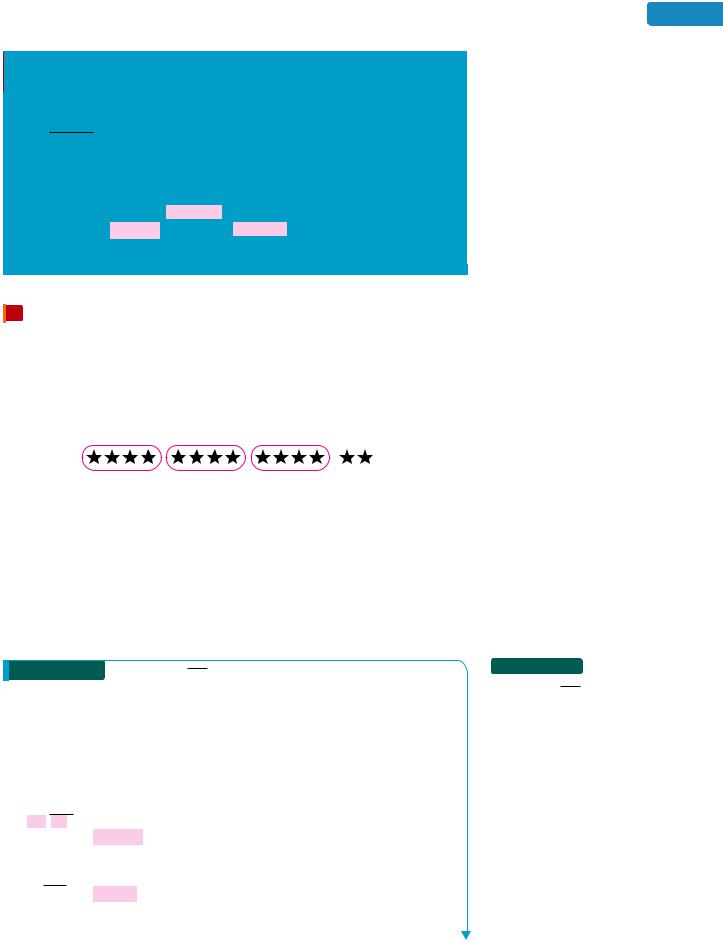
1.5 Dividing Whole Numbers |
59 |
Caution! If a difference at any time in the long division process is greater than or equal to the divisor, the estimate made at that point should be increased by 1, and you should try again.
706
48 33888336
28
0
288 Change the estimate from 5 to 6 in the ones column of the quotient.
288 Multiply 6 and 48, and subtract their product, 288, from 288 to
0 get 0. Your solution should look like this.
The quotient is 706. Check the result using multiplication.
4 Perform long division (with a remainder).
Sometimes, it is not possible to separate a group of objects into a whole number of equal-sized groups. For example, if we start with a set of 14 stars and divide them into groups of 4 stars, we will have 3 groups of 4 stars and 2 stars left over. We call the left over part the remainder.
A set of 14 stars.
There are 3 groups of 4 stars. |
There are 2 |
|
stars left over. |
In the next long division example, there is a remainder. To check such a problem, we add the remainder to the product of the quotient and divisor. The result should equal the dividend.
(Quotient divisor) remainder dividend Recall that the operation within the parentheses must be performed first.
EXAMPLE 4 |
Divide: 23 832. Check the result. |
|
Strategy We will follow a four-step process: estimate, multiply, subtract, and bring down.
WHY This is how long division is performed.
Solution
Since 23 will not divide 8, we divide 83 by 23.
4
23 832 Ask: “How many times will 23 divide 83?” Since 23 is about 20, we can estimate the answer to that question by thinking 8 2 is 4, and we write the 4 in the tens column of the quotient.
4
23 832 Multiply 4 and 23, and write their product, 92, under the 83. Because 9292 is greater than 83, the estimate of 4 for the tens column of the quotient is too large. We will erase the 4 and decrease the estimate of the quotient
by 1 and try again.
 Self Check 4
Self Check 4
Divide: 34 792. Check the result.
Now Try Problem 39

60 |
Chapter 1 Whole Numbers |
 Self Check 5
Self Check 5
28,992
Divide:
629
Now Try Problem 43
3
23 832
69 14
3
23 83269
142
37
23 832
69
142
161
Change the estimate from 4 to 3 in the tens column of the quotient. Multiply 3 and 23, and subtract their product, 69, from 83, to get 14.
Bring down the 2 from the ones column of the dividend.
Ask: “How many times will 23 divide 142?” We can estimate the answer to
that question by thinking 14 2 is 7, and we write the 7 in the ones column
|
|
|
|
|
of the quotient. |
Multiply |
7 and 23, and write their product, 161, under 142. |
|||||
|
|
|
|
|
Because 161 is |
greater than 142, the estimate of 7 for the ones column of |
||||||
|
|
|
|
|
the quotient is too large. We will erase the 7 and decrease the estimate of |
|||||||
|
|
|
|
|
the quotient by 1 and try again. |
|||||||
36 |
|
|
|
|
|
|
|
|
|
|||
|
|
|
|
|
|
|
|
|
|
|
|
|
23 |
832 |
|
|
|
|
|
|
|
|
|
||
69 |
|
|
|
|
|
|
|
|
|
|||
|
|
|
|
Change the |
|
from 7 to 6 in the ones column of the quotient. |
||||||
|
142 |
|
estimate |
|||||||||
138 |
|
Multiply |
6 |
and 23, and |
subtract |
their product, 138, from 142, to get 4. |
||||||
4 |
|
The remainder |
||||||||||
The quotient is 36, and the remainder is 4. We can write this result as 36 R 4.
To check the result, we multiply the divisor by the quotient and then add the remainder. The result should be the dividend.
Check: Quotient |
Divisor |
Remainder |
|
|
|
|
|
|
|
|
|
|
|
(36 |
23) |
4 |
828 4 |
|||
|
|
|
832 |
|
|
Dividend |
Since 832 is the dividend, the answer 36 R 4 is correct.
EXAMPLE 5 |
13,011 |
Divide:
518
Strategy We will write the problem in long-division form and follow a four-step process: estimate, multiply, subtract, and bring down.
WHY This is how long division is performed.
Solution
We write the division in the form: 518 13011. Since 518 will not divide 1, nor 13, nor 130, we divide 1,301 by 518.
2
518 |
|
|
1301 |
1 |
Ask: “How many times will 518 divide 1,301?” Since 518 is about 500, |
||
1036 |
we can |
estimate |
the answer to that question by thinking 13 5 is |
||||
265 |
about 2, and we write the 2 in the tens column of the quotient. |
||||
Multiply |
2 and 518, and |
subtract |
their product, 1,036, from 1,301, to |
||
|
|||||
|
get 265. |
|
|
|
|
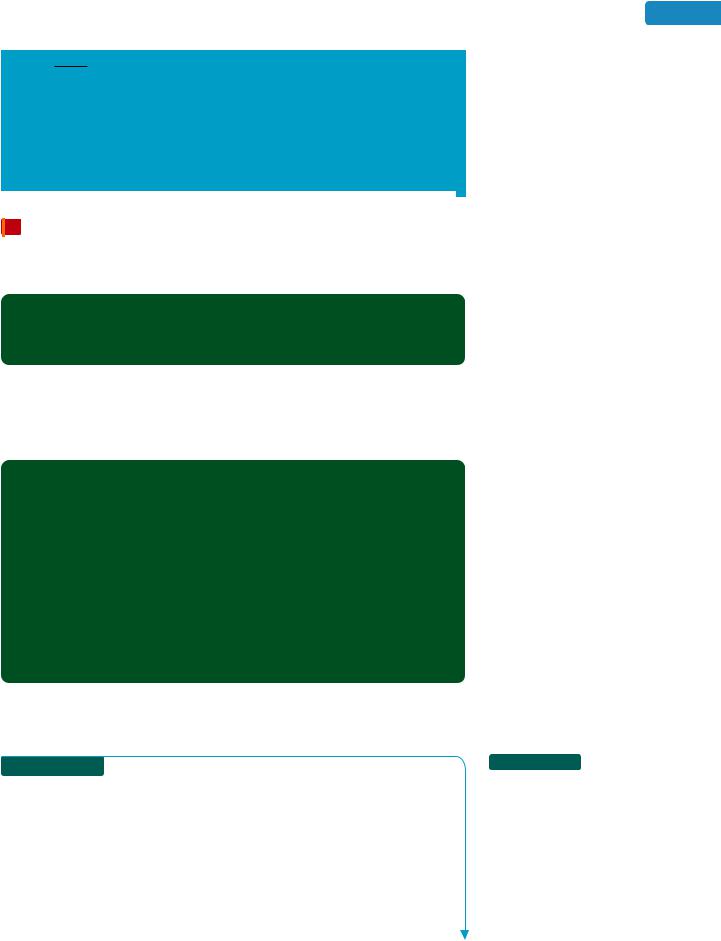
1.5 Dividing Whole Numbers |
61 |
25
518 13011
1036
2651
2590 61
Bring down the 1 from the ones column of the dividend. Ask: “How many times will 518 divide 2,651?” We can estimate the answer to
that question by thinking 26 5 is about 5, and we write the 5 in the ones column of the quotient. Multiply 5 and 518, and subtract their product, 2,590, from 2,651, to get a remainder of 61.
The result is 25 R 61. To check, verify that (25 518) 61 is 13,011.
5 Use tests for divisibility.
We have seen that some divisions end with a 0 remainder and others do not. The word divisible is used to describe such situations.
Divisibility
One number is divisible by another if, when dividing them, we get a remainder of 0.
Since 27 3 9, with a 0 remainder, we say that 27 is divisible by 3. Since 27 5 5 R 2, we say that 27 is not divisible by 5.
There are tests to help us decide whether one number is divisible by another.
Tests for Divisibility
A number is divisible by
•2 if its last digit is divisible by 2.
•3 if the sum of its digits is divisible by 3.
•4 if the number formed by its last two digits is divisible by 4.
•5 if its last digit is 0 or 5.
•6 if it is divisible by 2 and 3.
•9 if the sum of its digits is divisible by 9.
•10 if its last digit is 0.
There are tests for divisibility by a number other than 2, 3, 4, 5, 6, 9, or 10, but they are more complicated. See problems 109 and 110 of Study Set 1.5 for some examples.
|
EXAMPLE 6 |
Is 534,840 divisible by: |
a. 2 b. 3 |
c. 4 d. 5 e. 6 f. 9 g. 10 |
|
Strategy We will look at the last digit, the last two digits, and the sum of the digits of each number.
WHY The divisibility rules call for these types of examination.
Solution
a.534,840 is divisible by 2, because its last digit 0 is divisible by 2.
b.534,840 is divisible by 3, because the sum of its digits is divisible by 3.
5 3 4 8 4 0 24 and 24 3 8
 Self Check 6
Self Check 6
Is 73,311,435 divisible by:
a. |
2 |
b. |
3 |
c. |
5 |
d. |
6 |
e. |
9 |
f. |
10 |
Now Try Problems 49 and 53

62 |
Chapter 1 Whole Numbers |
 Self Check 7
Self Check 7
Divide: a. 50 10
b.62,000 100
c.12,000 1,500
Now Try Problems 55 and 57
c.534,840 is divisible by 4, because the number formed by its last two digits is divisible by 4.
40 4 10
d.534,840 divisible by 5, because its last digit is 0 or 5.
e.534,840 is divisible by 6, because it is divisible by 2 and 3. (See parts a and b.)
f.534,840 is not divisible by 9, because the sum of its digits is not divisible by 9. There is a remainder.
24 9 2 R 6
g. 534,840 is divisible by 10, because its last digit is 0.
6 Divide whole numbers that end with zeros.
There is a shortcut for dividing a dividend by a divisor when both end with zeros. We simply remove the ending zeros in the divisor and remove the same number of ending zeros in the dividend.
EXAMPLE 7 |
Divide: a. 80 |
10 b. 47,000 |
100 c. 350 9,800 |
|
Strategy We will look for ending zeros in each divisor.
WHY If a divisor has ending zeros, we can simplify the division by removing the same number of ending zeros in the divisor and dividend.
Solution
There is one zero in the divisor.
a.80 10 8 1 8
Remove one zero from the dividend and the divisor, and divide.
There are two zeros in the divisor.
b.47,000 100 470 1 470
Remove two zeros from the dividend and the divisor, and divide.
c. To find
350 9,800
we can drop one zero from the divisor and the dividend and perform the division 35 980.
28
35 98070 280280 0
Thus, 9,800 350 is 28.
7 Estimate quotients of whole numbers.
To estimate quotients, we use a method that approximates both the dividend and the divisor so that they divide easily. There is one rule of thumb for this method: If possible, round both numbers up or both numbers down.
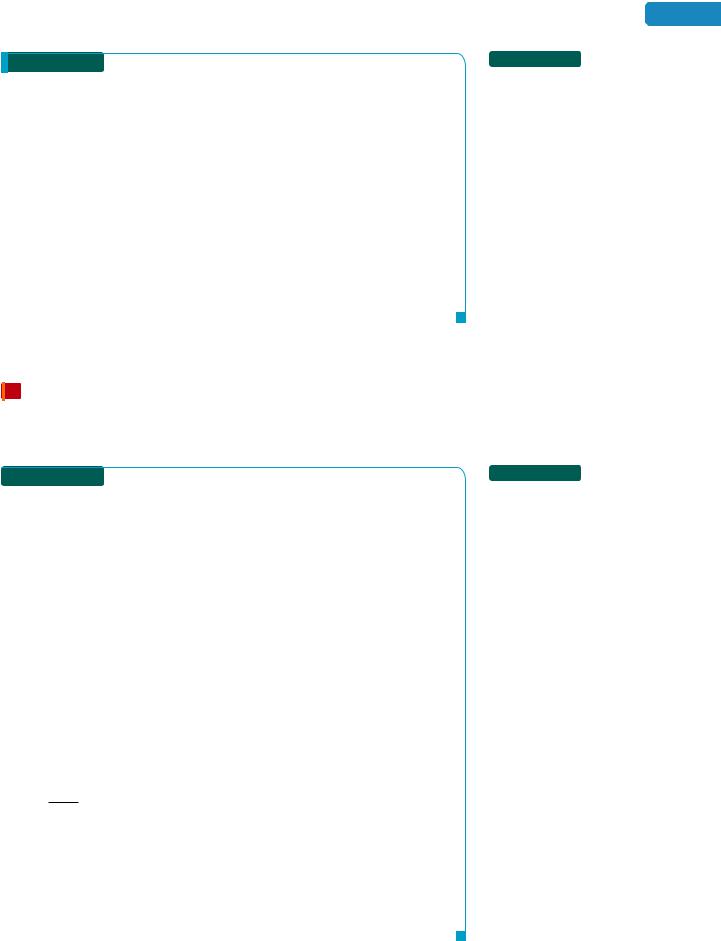
EXAMPLE 8 Estimate the quotient: 170,715 57
Strategy We will round the dividend and the divisor up and find 180,000 60.
WHY The division can be made easier if the dividend and the divisor end with zeros. Also, 6 divides 18 exactly.
Solution
|
|
The dividend is |
|
|
|
|
||||
|
|
approximately |
|
|
|
|
|
|
||
|
|
|
|
|
|
|
||||
|
|
|
|
|
|
|
|
|
||
170,715 57 |
180,000 60 3,000 To divide, drop one zero from 180,000 |
|||||||||
|
|
|
|
The divisor is |
|
and from 60 and find 18,000 |
6. |
|||
|
|
|
|
|
|
|||||
|
|
|
|
|
|
|
|
|||
|
|
|
|
approximately |
|
|
|
|
||
The estimate is 3,000.
If we calculate 170,715 57, the quotient is exactly 2,995. Note that the estimate is close: It’s just 5 more than 2,995.
1.5 Dividing Whole Numbers |
63 |
 Self Check 8
Self Check 8
Estimate the quotient: 33,642 42
Now Try Problem 59
8 Solve application problems by dividing whole numbers.
Application problems that involve forming equal-sized groups can be solved by division.
 A soup kitchen plans to feed 1,990 people. Because of space limitations, only 144 people can be served at one time. How many group seatings will be necessary to feed everyone? How many will be served at the last seating?
A soup kitchen plans to feed 1,990 people. Because of space limitations, only 144 people can be served at one time. How many group seatings will be necessary to feed everyone? How many will be served at the last seating?
Strategy We will divide 1,990 by 144.
WHY Separating 1,990 people into equal-sized groups of 144 indicates division.
Solution
We translate the words of the problem to numbers and symbols.
|
|
|
|
the number |
|
The number of |
|
the number of |
|
||
is equal to |
divided by |
of people at |
|||
group seatings |
people to be fed |
||||
|
|
each seating. |
|||
|
|
|
|
||
The number of |
|
|
|
||
|
|
|
|
||
|
1,990 |
|
144 |
||
group seatings |
|||||
|
|
|
|
Use long division to find 1,990 144.
13
144 1,990144 550432 118
The quotient is 13, and the remainder is 118. This indicates that fourteen group seatings are needed: 13 full-capacity seatings and one partial seating to serve the remaining 118 people.
 Self Check 9
Self Check 9
MOVIE TICKETS On a Saturday, 3,924 movie tickets were purchased at an IMAX theater. Each showing of the movie was sold out, except for the last. If the theater seats 346 people, how many times was the movie shown on Saturday? How many people were at the last showing?
Now Try Problem 91
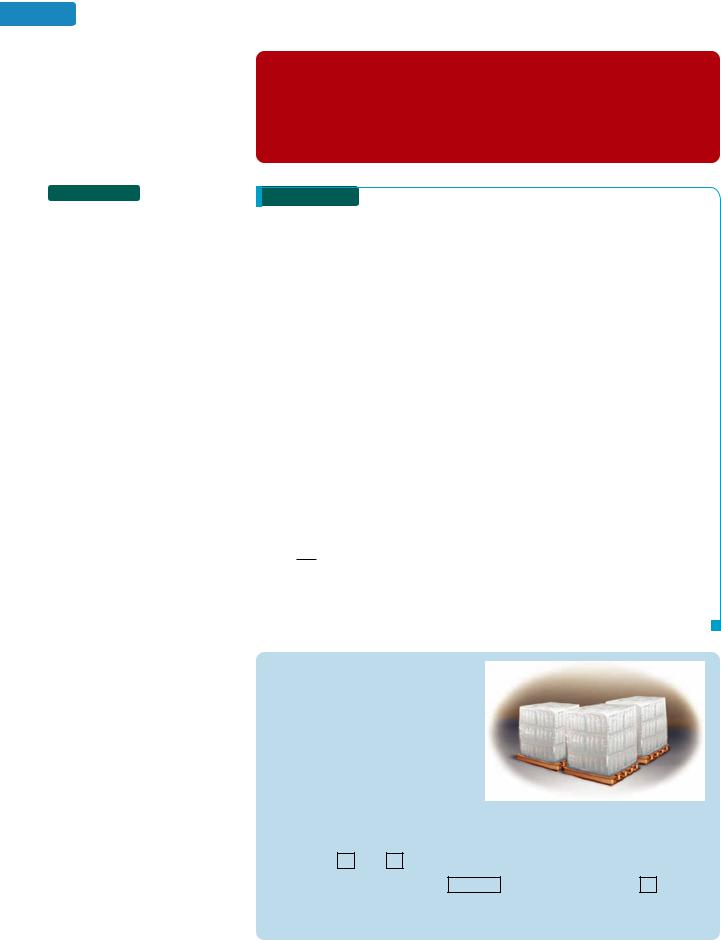
64 |
Chapter 1 Whole Numbers |
The Language of Mathematics Here are some key words and phrases that are often used to indicate division:
split equally |
distributed equally |
how many does each |
goes into |
per |
how much extra (remainder) |
shared equally |
among |
how many left (remainder) |
 Self Check 10
Self Check 10
TOURING A rock band will take a 275-day world tour and spend the same number of days in each of 25 cities. How long will they stay in each city?
Now Try Problem 97
Timeshares Every year, the 73 part-owners of a timeshare resort condominium get use of it for an equal number of days. How many days does each part-owner get to stay at the condo? (Use a 365-day year.)
Strategy We will divide 365 by 73.
WHY Since the part-owners get use of the condo for an equal number of days, the phrase “How many days does each” indicates division.
Solution
We translate the words of the problem to numbers and symbols.
The number |
|
|
|
|
|
|
the number |
|
the number |
||
of days each |
|
|
|||
is equal to |
of days |
divided by |
of |
||
part-owner gets |
|||||
|
in a year |
|
part-owners. |
||
to stay at the condo |
|
|
|||
|
|
|
|
||
|
|
|
|
||
|
|
|
|
|
|
The number |
|
|
|
|
|
of days each |
|
365 |
|
73 |
|
part-owner gets |
|||||
|
|
|
|
||
to stay at the condo |
|
|
|
|
Use long division to find 365 73.
5
73 365365 0
Each part-owner gets to stay at the condo for 5 days during the year.
Using Your CALCULATOR
The Division Key
Bottled water
A beverage company production run of 604,800 bottles of mountain spring water will be shipped to stores on pallets that hold
1,728 bottles each. We can find the number of full pallets to be shipped using the division key on a calculator.
604800 1728 |
350 |
On some calculator models, the ENTER key is pressed instead of for the result to be displayed.
The beverage company will ship 350 full pallets of bottled water.

1.5 Dividing Whole Numbers |
65 |
|
ANSWERS TO SELF CHECKS |
|
|
|
|
|
|
|
|
||
|
|
|
|
|
|
|
|
|
|||
|
1. a. 4 2 8 |
b. 8 7 56 |
c. |
9 |
4 36 |
2. 742; 4 742 |
2,968 |
3. 805 |
4. 23 R 10; |
||
|
(23 34) 10 792 |
5. 46 R 58 |
6. |
a. no |
b. yes |
c. yes |
d. no |
e. yes |
f. no |
||
|
7. a. 5 b. 620 |
c. 8 |
8. 800 |
9. 12 showings; 118 |
10. 11 days |
|
|
||||
|
|
|
|
|
|
|
|
|
|
|
|
S E C T I O N 1.5 STUDY SET
 VOCABULARY
VOCABULARY
Fill in the blanks.
1.In the three division problems shown below, label the dividend, divisor, and the quotient.
12 4 3
|
|
|
|
|
|
|
|
|
|
|
|
|
|
|
|
|
|
|
|
|
|
|
|
|
|
|
|
|
|
|
|
|
|
|
|
|
|
|
|
|
|
|
|
|
|
|
|
|
|
|
|
|
|
|
|
|
|
|
|
|
|
|
|
|
|
|
|
|
|
|
|
|
|
|
|
|
|
|
|
|
|
|
|
|
|
|
|
|
|
|
|
|
|
|
|
|
|
|
|
|
|
|
|
|
|
|
|
|
|
|
|
|
|
|
|
|
|
|
|
|
|
|
|
|
|
|
|
|
|
|
||||||||
|
|
|
|
|
|
|
|
|
|
|
|
|
|
|
|
|
|
||||||||||||||||
|
3 |
|
|
|
|
|
|
|
|
|
|
|
|
|
|
12 |
3 |
|
|
||||||||||||||
|
4 |
|
|
|
|
|
|
|
|
|
|
|
|
|
|
|
|
|
4 |
|
|
||||||||||||
|
12 |
|
|
|
|
|
|
|
|
|
|
|
|
|
|
|
|||||||||||||||||
|
|
|
|
|
|
|
|
|
|
|
|
|
|
|
|
|
|
|
|
|
|
|
|
|
|
||||||||
|
|
|
|
|
|
|
|
|
|
|
|
|
|
|
|
|
|
|
|
|
|
|
|
|
|
|
|
|
|
|
|||
2. |
We call 5 8 40 the related |
|
|
|
|
|
|
|
|
|
statement |
||||||||||||||||||||||
|
for the division 40 8 5. |
|
|
|
|
|
|
|
|
|
|
|
|
||||||||||||||||||||
3. |
|
|
|
|
|
|
|
|
|
|
|
|
|
|
|
|
-division form. |
||||||||||||||||
The problem 6 246 is written in |
|
|
|
|
|
||||||||||||||||||||||||||||
4. |
If a division is not exact, the leftover part is called the |
||||||||||||||||||||||||||||||||
|
|
. |
|
|
|
|
|
|
|
|
|
|
|
|
|
|
|
|
|
|
|
|
|
|
|
|
|||||||
5. |
One number is |
|
|
by another number if, when |
|||||||||||||||||||||||||||||
|
we divide them, the remainder is 0. |
|
|
|
|
|
|||||||||||||||||||||||||||
6. |
Phrases such as split equally and how many does each |
||||||||||||||||||||||||||||||||
|
indicate the operation of |
|
|
|
|
|
|
|
|
. |
|
|
|
|
|
|
|
|
|
|
|||||||||||||
 CONCEPTS
CONCEPTS
7.a. Divide the objects below into groups of 3. How many groups of 3 are there?
•• • • • • • • • • • • • • • • • • • • •
b.Divide the objects below into groups of 4. How many groups of 4 are there? How many objects are left over?
** * * * * * * * * * * * * * * * * * * * *
8.Tell whether each statement is true or false.
a.Any whole number divided by 1 is equal to that number.
b.Any nonzero whole number divided by itself is equal to 1.
c.Zero divided by any nonzero number is undefined.
d.Division of a number by 0 is equal to 0.
Fill in the blanks. |
|
|
|
|
|
|
|
|
|
|
|
|
|
|||||||
|
|
|
|
|
|
|
|
|
|
|
|
|
||||||||
9. |
Divide, if possible. |
|
|
|
|
|
|
|
|
|
|
|
|
|
||||||
|
a. |
25 |
|
|
|
|
|
b. |
|
6 |
|
|
|
|
|
|||||
|
25 |
|
|
|
|
|
1 |
|
|
|
|
|||||||||
|
c. |
100 |
is |
|
|
|
d. |
0 |
|
|
|
|
|
|
||||||
|
|
|
|
|
|
|
|
|
|
|
|
|||||||||
|
0 |
|
|
12 |
|
|
|
|
|
|||||||||||
|
|
|
|
|
|
|
|
|||||||||||||
10. |
To perform long division, we follow a four-step process: |
|
||||||||||||||||||
|
|
|
|
, |
|
, |
|
, and |
|
|
|
|
. |
|
||||||
11. Find the first digit of each quotient.
|
5 |
|
|
|
|
|
|
|
9 |
|
|
|
|
|
|
|
|
|
|
|
|
|
|||||
a. |
1147 |
|
|
b. |
587 |
|
|||||||
|
23 |
|
|
|
|
|
16 |
|
|
|
|||
|
|
|
|
|
|
|
|
|
|||||
|
|
|
|
|
|
|
|
|
|||||
c. |
7501 |
|
d. |
892 |
|||||||||
12. a. Quotient divisor |
|
|
|
|
|
|
|
||||||
b. |
(Quotient divisor) |
|
|
|
|
|
dividend |
||||||
|
|
|
|
|
|
|
|
|
37 |
|
|
||
13.To check whether the division 9 333 is correct, we use multiplication:
9
14.a. A number is divisible by  if its last digit is divisible by 2.
if its last digit is divisible by 2.
b. |
A number is divisible by 3 if the |
|
of its digits |
||||||
|
is divisible by 3. |
|
|
|
|
|
|||
c. |
A number is divisible by 4 if the number formed |
||||||||
|
by its last |
|
digits is divisible by 4. |
|
|
|
|
|
|
15. a. |
A number is divisible by 5 if its last digit is |
|
or |
|
. |
||||
|
|
||||||||
b.A number is divisible by 6 if it is divisible by  and
and  .
.
c. A number is divisible by 9 if the |
|
of its digits |
is divisible by 9. |
|
|
d. A number is divisible by  if its last digit is 0.
if its last digit is 0.
16.We can simplify the division 43,800 200 by
removing two |
|
from the dividend and the |
divisor. |
|
|

66 |
Chapter 1 Whole Numbers |
NOTATION
17.Write three symbols that can be used for division.
18.In a division, 35 R 4 means “a quotient of 35 and a
of 4.”
GUIDED PRACTICE
Fill in the blanks. See Example 1.
|
|
|
5 |
|
|
|
|
|
|
|
|
|
|
|
|
19. |
9 |
45 |
|
because |
|
|
|
|
|
|
. |
|
|||
20. |
54 |
9 because |
|
|
|
|
|
|
. |
||||||
|
|
|
|
||||||||||||
6 |
|
|
|
|
|
||||||||||
|
|
|
|
|
|
|
|
|
|
|
|
|
|
|
|
21.44 11 4 because 

 .
.
22.120 12 10 because 

 .
.
Write the related multiplication statement for each division.
See Example 1.
23. 21 3 7
72
25. 12 6
Divide using long division. Check the result. See Example 2.
28. 72 4
29. |
87 |
|
|
30. |
98 |
|
|
|||
3 |
|
|
|
7 |
|
|
||||
31. |
2,275 7 |
32. |
1,728 8 |
|||||||
|
9 |
|
|
|
|
|
5 |
|
|
|
33. |
|
1,962 |
34. |
1,635 |
|
|||||
|
|
|
|
|
|
|
|
|
||
Divide using long division. Check the result. See Example 3.
35. |
62 |
31,248 |
36. |
71 |
28,613 |
|
37 |
|
|
28 |
|
37. |
22,274 |
38. |
19,712 |
Divide using long division. Check the result. See Example 4.
39. |
24 |
951 |
|
40. |
33 |
943 |
|
41. |
999 46 |
42. |
979 49 |
||||
Divide using long division. Check the result. See Example 5.
43. |
24,714 |
|
44. |
29,773 |
|
||
524 |
|
531 |
|
||||
|
|
|
|
||||
45. |
|
|
|
46. |
|
|
|
178 3,514 |
164 2,929 |
||||||
If the given number is divisible by 2, 3, 4, 5, 6, 9, or 10, enter a checkmark in the box. See Example 6.
Divisible by |
|
2 3 4 5 6 9 10 |
47.2,940
48.5,850
49.43,785
50.72,954
51.181,223
52.379,157
53.9,499,200
54.6,653,100
Use a division shortcut to find each quotient. See Example 7.
55. |
700 10 |
|
56. |
900 10 |
|
|||||||||||||
57. |
|
|
|
|
|
58. |
|
|
|
|
|
|
|
|||||
450 9,900 |
|
260 9,100 |
|
|||||||||||||||
Estimate each quotient. See Example 8. |
||||||||||||||||||
59. |
353,922 38 |
60. |
237,621 55 |
|||||||||||||||
61. |
46,080 933 |
62. |
81,097 419 |
|||||||||||||||
|
TRY IT YOURSELF |
|
|
|
|
|
|
|
|
|
|
|||||||
|
|
|
|
|
|
|
|
|
|
|
||||||||
Divide. |
|
|
|
|
|
|
|
|
|
|
||||||||
63. |
25,950 |
|
|
|
64. |
23,541 |
|
|
|
|
||||||||
|
|
|
|
|
|
|
|
|
|
|
|
|
|
|
|
|||
6 |
|
|
|
|
7 |
|
|
|
|
|
|
|||||||
|
|
|
|
|
|
|
|
|
|
|
|
|
||||||
65. |
54 9 |
|
|
66. |
72 8 |
|
|
|
||||||||||
67. |
273 31 |
|
68. |
295 35 |
|
|||||||||||||
69. |
64,000 |
|
|
|
70. |
125,000 |
|
|
|
|||||||||
|
|
|
|
|
|
|
|
|
|
|
|
|
|
|
|
|||
400 |
|
|
|
5,000 |
|
|
|
|
||||||||||
|
|
|
|
|
|
|
|
|
|
|||||||||
71. |
745 divided by 7 |
72. |
931 divided by 9 |
|||||||||||||||
|
29 |
|
|
|
|
27 |
|
|
|
|
|
|||||||
73. |
14,761 |
74. |
10,989 |
|
||||||||||||||
75. |
539,000 175 |
76. |
749,250 185 |
|||||||||||||||
77. |
75 15 |
|
|
78. |
96 16 |
|
|
|||||||||||
79. |
|
|
|
|
|
80. |
|
|
|
|
|
|
||||||
212 5,087 |
|
214 5,777 |
|
|||||||||||||||
|
42 |
|
|
|
|
|
|
83 |
|
|
|
|
|
|
|
|||
81. |
1,273 |
82. |
3,363 |
|
|
|||||||||||||
83. |
89,000 1,000 |
84. |
930,000 1,000 |
|||||||||||||||
85. |
57 |
|
|
|
|
|
|
86. |
82 |
|
|
|
|
|
|
|
|
|
8 |
|
|
|
|
|
|
9 |
|
|
|
|
|
|
|
|
|||
 APPLICATIONS
APPLICATIONS
87.TICKET SALES A movie theater makes a $4 profit on each ticket sold. How many tickets must be sold to make a profit of $2,500?

88.RUNNING Brian runs 7 miles each day. In how many days will Brian run 371 miles?
89.DUMP TRUCKS A 15-cubic-yard dump truck must haul 405 cubic yards of dirt to a construction site. How many trips must the truck make?
90.STOCKING SHELVES After receiving a delivery of 288 bags of potato chips, a store clerk stocked each shelf of an empty display with 36 bags. How many shelves of the display did he stock with potato chips?
91.LUNCH TIME A fifth grade teacher received 50 half-pint cartons of milk to distribute evenly to his class of 23 students. How many cartons did each child get? How many cartons were left over?
92.BUBBLE WRAP A furniture manufacturer uses an 11-foot-long strip of bubble wrap to protect a lamp when it is boxed and shipped to a customer. How many lamps can be packaged in this way from a 200-foot-long roll of bubble wrap? How many feet will be left on the roll?
93.GARDENING A metal can holds 640 fluid ounces of gasoline. How many times can the 68-ounce tank of a lawnmower be filled from the
can? How many ounces of gasoline will be left in the can?
94.BEVERAGES A plastic container holds 896 ounces of punch. How many 6-ounce cups of punch can be served from the container? How many ounces will be left over?
95.LIFT SYSTEMS If the bus weighs 58,000 pounds, how much weight is on each jack?
96.LOTTERY WINNERS In 2008, a group of 22 postal workers, who had been buying Pennsylvania Lotto tickets for years, won a $10,282,800 jackpot. If they split the prize evenly, how much money did each person win?
97.TEXTBOOK SALES A store received $25,200 on the sale of 240 algebra textbooks. What was the cost of each book?
98.DRAINING POOLS A 950,000-gallon pool is emptied in 20 hours. How many gallons of water are drained each hour?
1.5 Dividing Whole Numbers |
67 |
99.MILEAGE A tour bus has a range of 700 miles on one tank (140 gallons) of gasoline. How far does the bus travel on one gallon of gas?
100.WATER MANAGEMENT The Susquehanna River discharges 1,719,000 cubic feet of water into Chesapeake Bay in 45 seconds. How many cubic feet of water is discharged in one second?
101.ORDERING SNACKS How many dozen doughnuts must be ordered for a meeting if
156 people are expected to attend, and each person will be served one doughnut?
102.TIME A millennium is a period of time equal to one thousand years. How many decades are in a millennium?
103.VOLLEYBALL A total of 216 girls are going to play in a city volleyball league. How many girls should be put on each team if the following requirements must be met?
•All the teams are to have the same number of players.
•A reasonable number of players on a team is 7 to 10.
•For scheduling purposes, there must be an even number of teams (2, 4, 6, 8, and so on).
104.WINDSCREENS A farmer intends to plant pine trees 12 feet apart to form a windscreen for her crops. How many trees should she buy if the length of the field is 744 feet?
12 ft |
|
12 ft |
105.ENTRY-LEVEL JOBS The typical starting salaries for 2008 college graduates majoring in nursing, marketing, and history are shown below. Complete the last column of the table.
College major Yearly salary Monthly salary
Nursing $52,128
Marketing $43,464
History $35,952
Source: CNN.com/living
